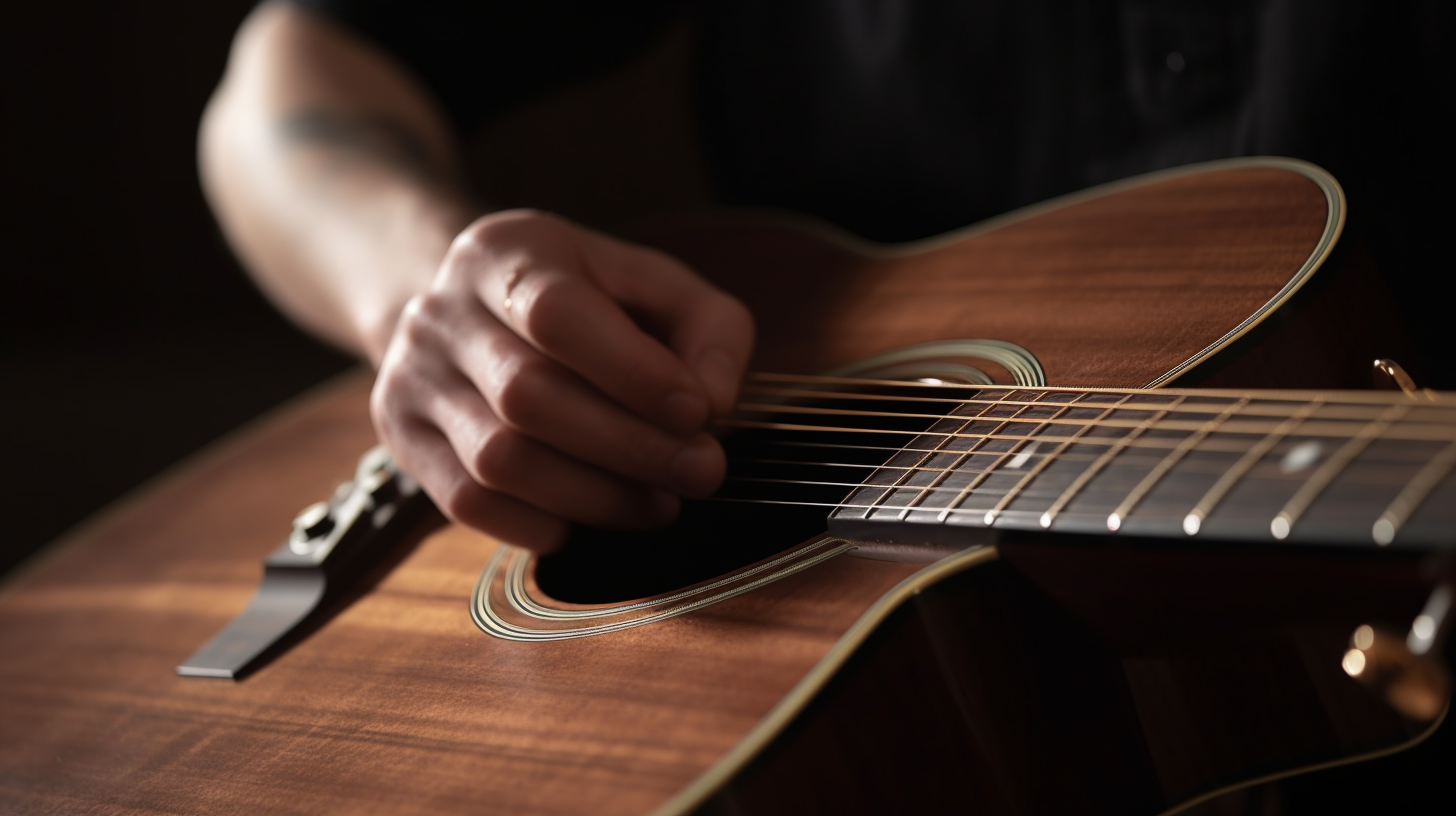1. Introduction
Imagine you’re on stage: the drummer has just closed out the final drum fill, the energy is sky-high, and you need to switch in an instant from a blazing rock solo with a pick in hand to a gentle fingerstyle acoustic arpeggio. Every fraction of a second counts: it’s not just about swapping instruments—it’s about instantly recalibrating the attack angle on the strings and the fine motor control of your picking hand. In this article, we’ll explore proven techniques to make this transition smooth and precise, and we’ll introduce you to DualPicks, the tool that lets you switch from pick to fingerstyle in a flash.
2. The challenges of switching between pick and fingerstyle
Switching between these two techniques is anything but easy, for several reasons:
-
Opposing grips:
-
Pick: thumb and index finger held tightly for maximum stability.
-
Fingerstyle: all fingers free, each plucking independently.
-
-
Attack angle: with a pick, the string is struck at an angle; in fingerstyle, the finger plucks almost perpendicularly.
-
Muscle tension: excessive wrist or forearm tension slows down the switch.
-
Timing and coordination: even a single missed beat while dropping or grabbing the pick can throw the whole groove off.
In the practice room, you might find yourself repeating the same passage endlessly; on stage, you risk killing the adrenaline. That’s why training your picking hand to switch confidently is crucial for any versatile guitarist.
3. Practical techniques for a seamless transition
Remember: always keep your wrist and forearm relaxed, elbow slightly bent and close to your body to quickly sense any tension.
Tip 1: Pick release exercises
-
Grip the pick between your thumb and index finger.
-
Slowly loosen your grip until it drops between your fingers.
-
Instantly grab the pick again using your middle and ring fingers.
Repeat in a loop, keeping the metronome at 60 BPM and gradually increasing the speed.
Every 3 days, increase by 5 BPM until you reach 100 BPM.
Goal: automate the release and pickup so they become an unconscious reflex.
Tip 2: “Tap & Grab” technique
-
Position your picking hand in fingerstyle mode, with the pick hidden between the middle and ring fingers.
-
On the metronome’s click, “tap” the pick down to the fingertips and grab it instantly.
-
Practice tapping precisely so the pick always lands in the optimal playing position.
Tip 3: Alternating riffs & rhythmic variations
Choose a simple riff (for example in E minor) and play it for 4 bars with a pick, then 4 bars in fingerstyle.
- Set the metronome to 80 BPM; then subdivide into eighths and sixteenths
- Each session: 10 cycles, focusing on the transition between techniques
- Every 3 days: +5 BPM
When you hit 100 BPM in 4/4, try out 3/4 and 6/8 to refine your adaptability.
With consistent practice, your picking-hand muscles will internalize the motion, making the pick-fingerstyle switch as fast as a natural gesture.
4. An alternative solution: DualPicks, your transition ally
When the pick–fingerstyle switch becomes a challenge, DualPicks enters the scene with a truly ingenious mechanism:
-
Quick-release pick holder
The pick stays firmly in place on the winglet thanks to a gel adhesive: you’ll never risk dropping it, and you don’t have to worry about it mid-performance. -
From pick to fingerstyle in an instant
As soon as you need to switch to fingerstyle, a hinge with adjustable rotation tension folds the winglet towards your palm, hiding the pick inside your hand and leaving all your fingers free to pluck. -
Zero compromise on feel
Even with the pick attached to the winglet, your hand’s tactile feedback remains completely unchanged—your dynamics and tone stay exactly as they always were.
In practice, DualPicks removes the last variable from an already complex transition, letting you focus entirely on the music: fewer distractions, more creativity. Just rotate the winglet, and you’re instantly in fingerstyle mode.
5. Demo video
6. Conclusion
Switching between pick and fingerstyle is a skill that elevates every guitarist’s versatility: from rock to acoustic, from live to studio, a smooth transition keeps the song’s energy intact. Thanks to the manual techniques described and to DualPicks, you can say goodbye to small hiccups and play with complete freedom.
“Versatility isn’t a gift—it’s the result of targeted practice.”
Discover DualPicks, your new partner for playing without worries and keeping the groove front and center!
7. In brief
-
Key exercises: release, tap & grab, alternating riffs.
-
Metronome: 60→100 BPM, subdivisions on sixteenths, vary meters.
-
Support: DualPicks for instant transitions.
-
Tips: relaxed posture, elbow close to the body, adaptation period.
8. Glossary
-
Fingerstyle: plucking the strings with your fingers, without a pick.
-
Subdivisions: subdivisions of the beat (eighths, sixteenths, etc.).


Share:
Why DualPicks Is the Best Ally for Modern Guitarists | DualPicks